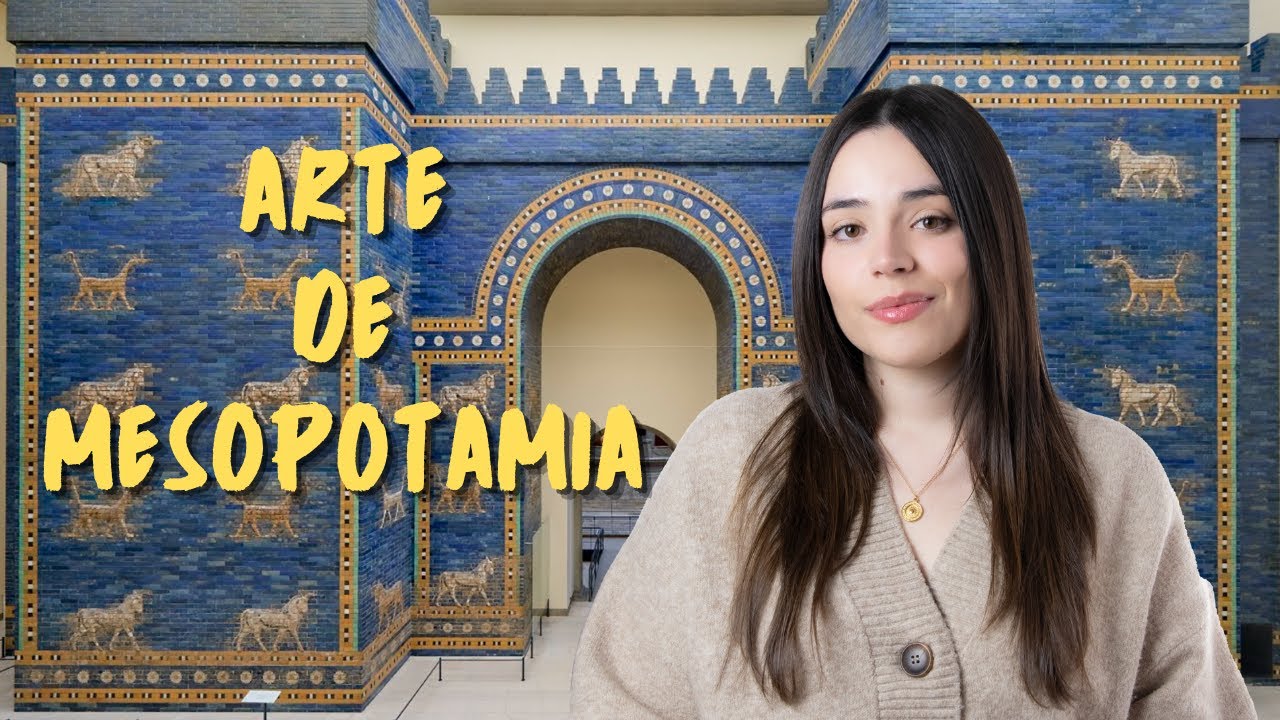The Tigris and Euphrates Rivers
Summary
TLDRThe Tigris and Euphrates rivers, integral to the rise of ancient Mesopotamian civilizations, continue to shape the region today. Flowing through modern-day Turkey, Syria, Iraq, and Iran, these rivers provided the fertile soil that nurtured early kingdoms like Sumer, Akkad, and Babylonia. Beyond their geographical importance, the rivers hold religious significance in Judaism, Christianity, and Islam. The Tigris and Euphrates have not only influenced ancient empires but also remain vital to the agriculture and livelihoods of millions in the present day, making them key to both historical and contemporary life in the Middle East.
Takeaways
- 😀 The Tigris and Euphrates rivers form an interconnected river system that shaped Mesopotamia, the 'cradle of civilization'.
- 😀 The Tigris is 1,180 miles long, making it the second-largest river in Western Asia, while the Euphrates is the longest at 1,740 miles.
- 😀 The Tigris originates from Eastern Turkey, while the Euphrates starts in the Armenian Highlands of Turkey, and both rivers flow through Iraq, Syria, Iran, and Turkey.
- 😀 These rivers are crucial for providing drinking water and irrigation to the countries they flow through.
- 😀 The Fertile Crescent, formed by the Tigris and Euphrates, allowed ancient civilizations like Sumer, Akkad, Assyria, and Babylonia to thrive.
- 😀 Mesopotamian kingdoms like Sumer arose around the 4th millennium BCE, aided by the rivers' abundant water supply.
- 😀 The Epic of Gilgamesh, written in the late 3rd millennium BCE, is the earliest known written story and comes from this region.
- 😀 The Euphrates served as a political boundary between ancient empires like Rome, Persia, and Egypt.
- 😀 Both rivers have a highly variable flow, sometimes changing course due to droughts or floods, which affected entire cities.
- 😀 The Tigris and Euphrates hold significant spiritual importance in Judaism, Christianity, and Islam, and are mentioned in religious texts like the Bible and Quran.
- 😀 In modern times, the Tigris and Euphrates continue to be vital to agriculture and the livelihood of millions of people living along their banks.
Q & A
What is the significance of the Tigris and Euphrates rivers to Mesopotamia?
-The Tigris and Euphrates rivers are vital to Mesopotamia, providing the necessary water for agriculture and supporting the development of early civilizations like Sumer, Akkad, and Babylonia. They formed the Fertile Crescent, making the region habitable in an otherwise arid environment.
What is the length of the Tigris and Euphrates rivers?
-The Tigris river is 1,180 miles long, while the Euphrates is the longer of the two at 1,740 miles.
Where do the Tigris and Euphrates rivers originate?
-Both rivers originate in Turkey. The Tigris begins near Lake Hazar in Eastern Turkey, while the Euphrates forms from the confluence of the Karasu and Murat rivers in the Armenian Highlands.
What are some tributaries of the Tigris and Euphrates rivers?
-The Tigris has tributaries like the Greater and Lesser Zab, the Al-Adheim, the Diyala, and the Karkheh rivers. The Euphrates is fed by tributaries such as the Toma, Perry, Kulti, and Monsur rivers.
What is the Fertile Crescent, and how is it related to the Tigris and Euphrates rivers?
-The Fertile Crescent is a region of rich, well-watered soil surrounding Mesopotamia, made possible by the Tigris and Euphrates rivers. It is an area of fertile land that supported early agricultural civilizations.
How did the Tigris and Euphrates rivers influence ancient political boundaries?
-The Euphrates river served as a political boundary, often separating empires such as the Roman and Persian empires. It marked the eastern limit of Roman power and the western limit of the Persian Empire in ancient times.
What civilizations developed in Mesopotamia due to the Tigris and Euphrates rivers?
-Civilizations like Sumer, Akkad, Assyria, and Babylonia emerged in Mesopotamia, thanks to the fertile land provided by the Tigris and Euphrates rivers.
What is the significance of the Epic of Gilgamesh in relation to Mesopotamia?
-The Epic of Gilgamesh is the earliest known written story, originating from Mesopotamia around the late third millennium BCE. It recounts the mythical tale of Gilgamesh, the king of Uruk, and reflects the cultural and literary heritage of the region.
What is the religious significance of the Tigris and Euphrates rivers?
-The Tigris and Euphrates rivers are spiritually significant in Judaism, Christianity, and Islam. In the Bible, they are named as the rivers flowing from the Garden of Eden, and in Islam, the Euphrates is associated with the Battle of Karbala in 680 CE.
How do the Tigris and Euphrates rivers affect modern-day agriculture?
-In modern times, the Tigris and Euphrates rivers continue to provide essential irrigation and water resources for agriculture in the countries of Turkey, Syria, Iraq, and Iran, sustaining the livelihoods of people along their course.
Outlines

هذا القسم متوفر فقط للمشتركين. يرجى الترقية للوصول إلى هذه الميزة.
قم بالترقية الآنMindmap

هذا القسم متوفر فقط للمشتركين. يرجى الترقية للوصول إلى هذه الميزة.
قم بالترقية الآنKeywords

هذا القسم متوفر فقط للمشتركين. يرجى الترقية للوصول إلى هذه الميزة.
قم بالترقية الآنHighlights

هذا القسم متوفر فقط للمشتركين. يرجى الترقية للوصول إلى هذه الميزة.
قم بالترقية الآنTranscripts

هذا القسم متوفر فقط للمشتركين. يرجى الترقية للوصول إلى هذه الميزة.
قم بالترقية الآنتصفح المزيد من مقاطع الفيديو ذات الصلة

MESOPOTAMIA, el ARTE de las PRIMERAS CIVILIZACIONES de la HISTORIA | OBRAS y CARACTERÍSTICAS

MESOPOTÂMIA | Primeiros povos, cultura e economia

Ancient Mesopotamia | Early Civilizations | World History | Khan Academy

Ancient Sumer City-States

ARTE MESOPOTÂMICA PARA O ENEM E VESTIBULARES

ANCIENT MESOPOTAMIA song by Mr. Nicky
5.0 / 5 (0 votes)
